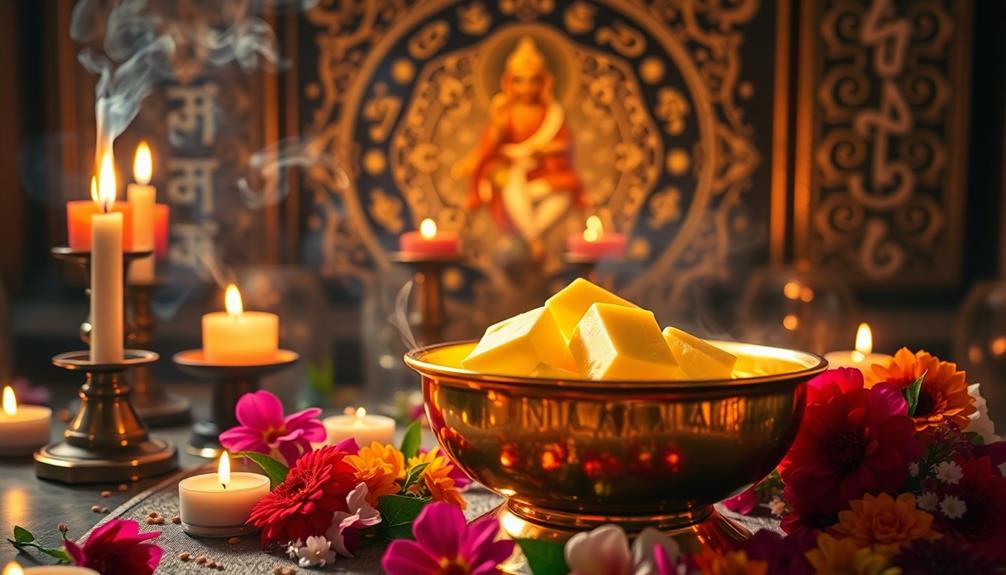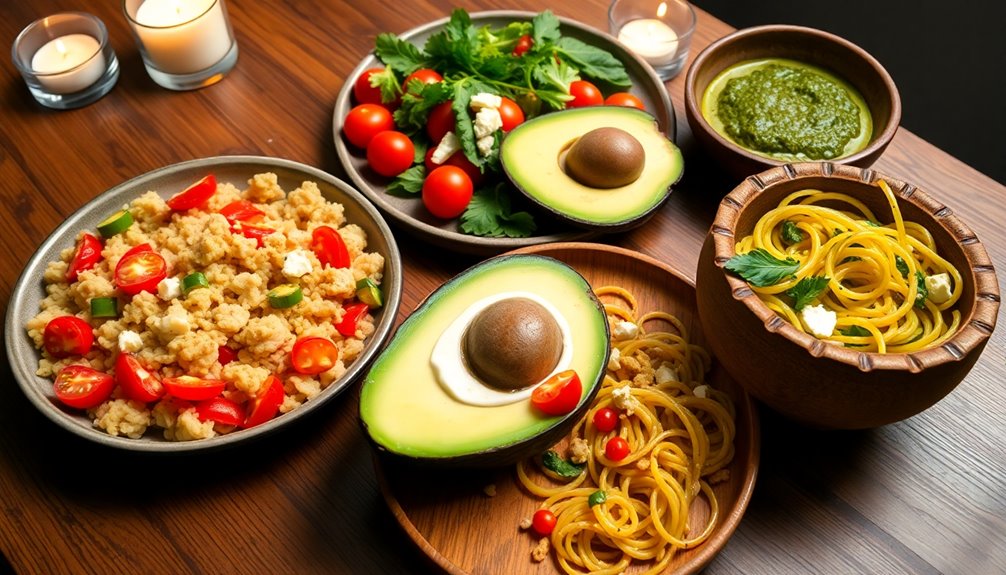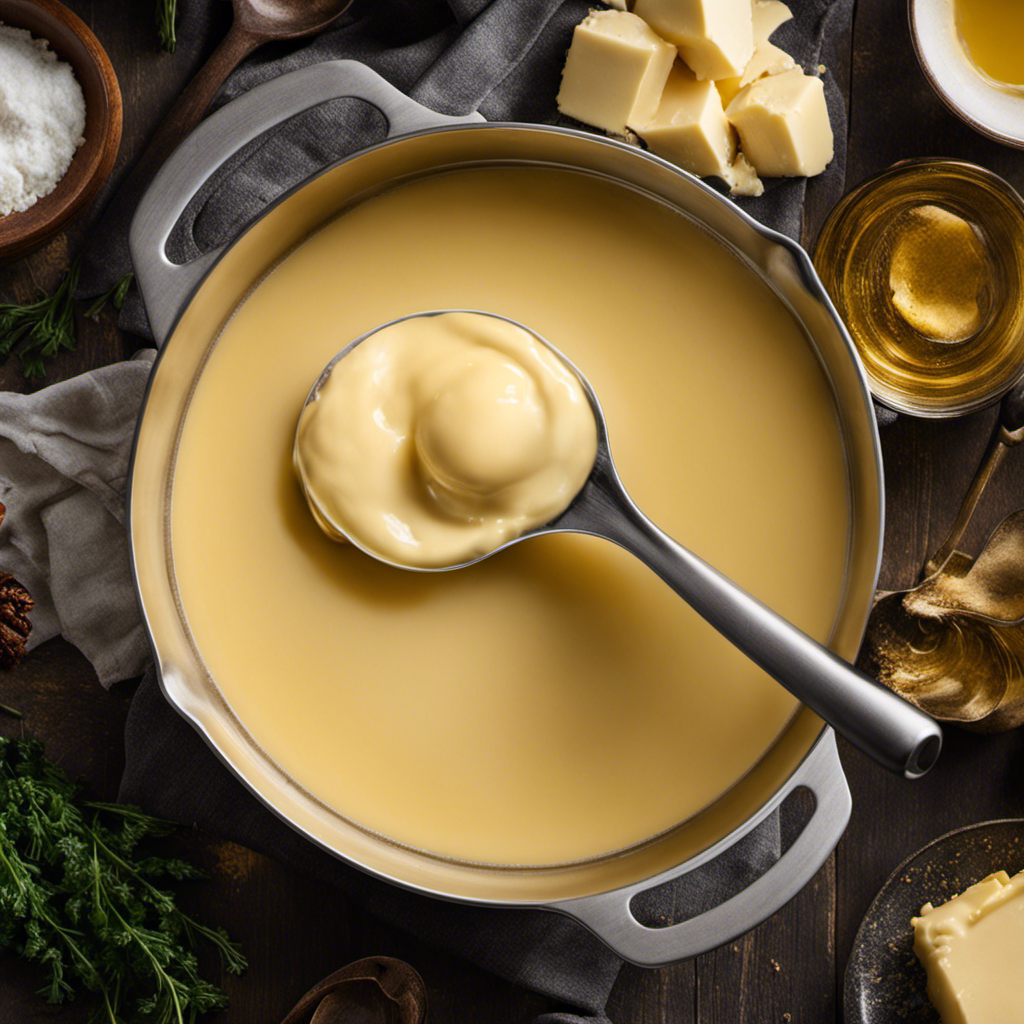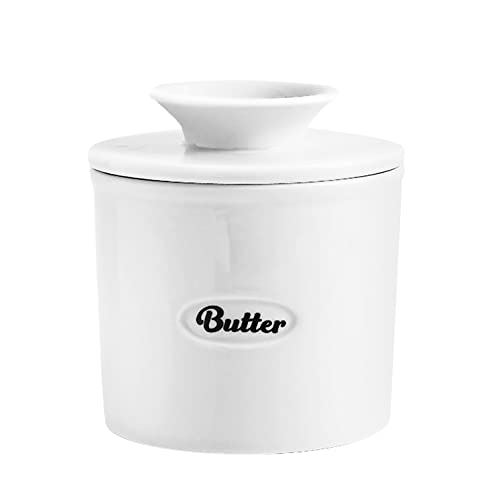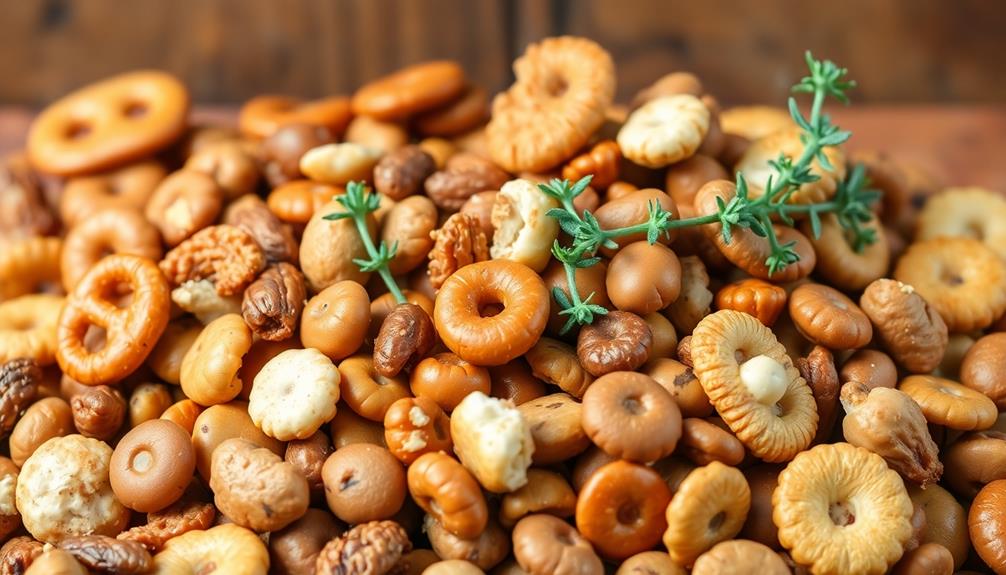Butter holds significant meaning in many religious practices, symbolizing nourishment, purity, and connection to the divine. In Hindu rituals, ghee is used in offerings, enhancing ceremonies and creating a sacred atmosphere. It's equally important in Jewish celebrations, where it complements traditional meals and enhances spiritual experiences. Christians also incorporate butter to represent abundance and hospitality during communal gatherings. Similarly, butter plays a role in Buddhism, African traditions, and Native American customs, emphasizing community and reverence for ancestors. This simple ingredient weaves through various cultures, enriching both rituals and culinary traditions. You'll uncover even more intriguing connections in these customs.
Key Takeaways
- Butter symbolizes abundance and nourishment across various cultures, playing a significant role in rituals and communal gatherings.
- In Hindu rituals, ghee is used for offerings, enhancing spiritual significance and creating a sacred atmosphere.
- Butter enhances the flavor of traditional dishes during Jewish and Christian celebrations, fostering community connections and hospitality.
- In Buddhism, butter lamps symbolize wisdom and purity, while ghee offerings represent nourishment and devotion.
- Butter is integral in various cultural rituals, honoring ancestors and marking life events, signifying wealth and prosperity.
Historical Significance of Butter
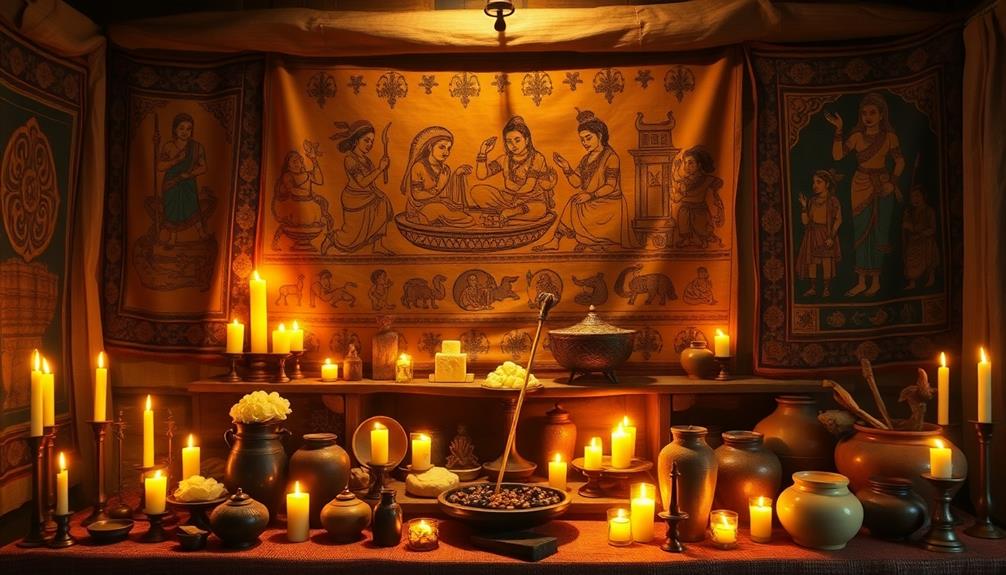
Butter has held a profound historical significance across various cultures and religions, symbolizing abundance and nourishment. You might notice that in many ancient societies, butter was more than just a food item; it represented wealth and prosperity. When you look at ancient texts and artifacts, you'll often find butter used in offerings, signifying a connection between the divine and the earthly.
In fact, its role as a cherished ingredient in ancient culinary traditions reflects its importance beyond sustenance, as it was often reserved for special occasions and rituals its role in culinary traditions.
In some cultures, it's believed that butter has protective qualities, and you might see it employed in rituals meant to ward off evil spirits or bring good fortune. As you explore these traditions, you realize how integral butter was in daily life, often used in feasts and celebrations to strengthen community ties.
The act of sharing butter in meals fostered unity, making it a crucial part of gatherings. You can see how its creamy texture and rich flavor have made it a beloved ingredient throughout history. From ancient Egypt to Medieval Europe, butter's role has been consistent: it embodies generosity and sustenance.
Butter in Hindu Rituals
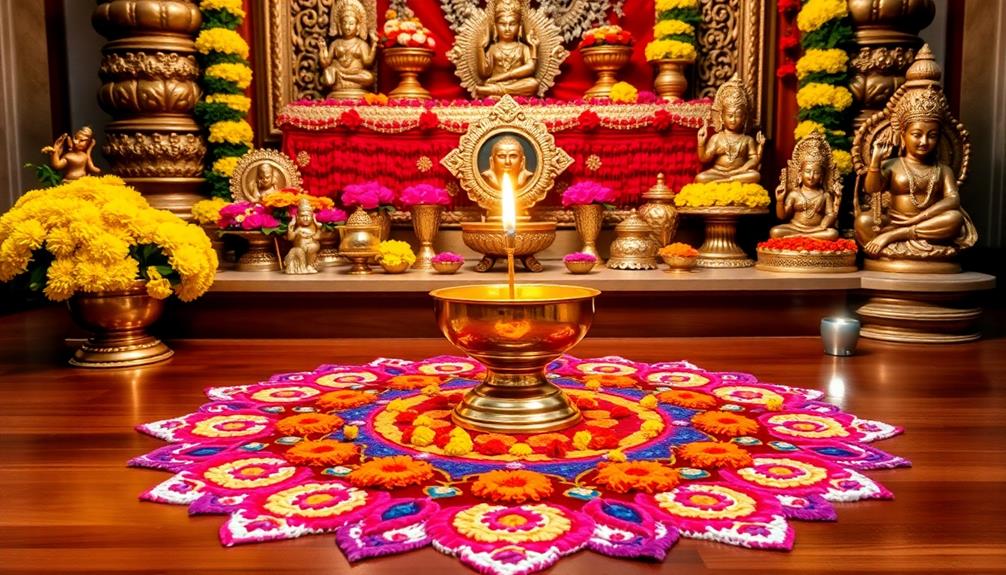
In Hindu rituals, ghee, a clarified form of butter, plays an essential role in various ceremonies and offerings. You'll find ghee used in pujas (prayer rituals) where it's offered to deities as a symbol of purity and devotion.
When you make offerings, the aroma of burning ghee-filled lamps fills the air, creating a sacred atmosphere that invites divine blessings.
During important ceremonies, such as weddings or festivals, ghee is often an integral part of the rituals. You might see it poured into the sacred fire during the Homa or Yagna, which signifies the connection between the physical and spiritual domains.
This act embodies the idea of surrendering one's ego and desires to a higher power.
In your own practices, you might also prepare traditional sweets and dishes using ghee, honoring the gods and sharing the blessings with family and friends.
This rich ingredient not only enhances the flavor but also carries deep spiritual significance. By incorporating ghee into your rituals, you're participating in a tradition that emphasizes connection, devotion, and the nourishment of both body and soul.
Ghee in Vedic Traditions
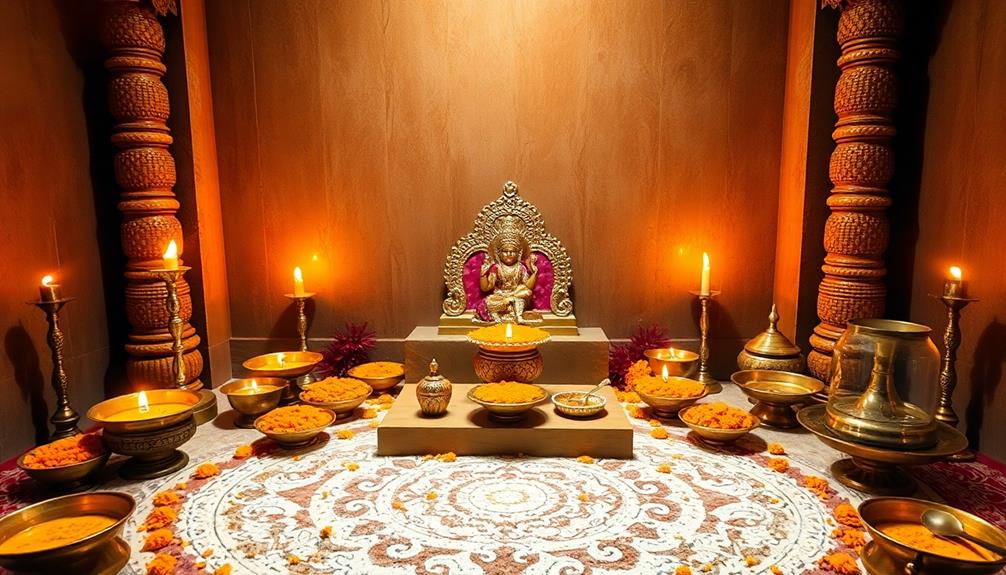
Emphasizing purity and spiritual significance, ghee holds a revered place in Vedic traditions. You'll find that it's not just a cooking ingredient; it's a sacred substance used in rituals and offerings.
Ghee is often regarded as a symbol of clarity and enlightenment, representing the essence of life itself. When you engage in Vedic rituals, you'll notice ghee being used in various ways, such as in fire sacrifices (yajnas) where it's offered to deities to invoke blessings.
In these sacred ceremonies, ghee acts as a medium that carries prayers to the heavens, showcasing its importance in connecting the material and spiritual worlds. You might also come across references to ghee in ancient texts, highlighting its role in purification and spiritual practices.
It's believed that consuming ghee can enhance your physical and mental well-being, fostering a sense of harmony and balance in your life.
Moreover, ghee is often used in Ayurvedic medicine, underlining its holistic significance in Vedic culture. As you explore Vedic traditions, you'll discover that ghee isn't just food; it's a conduit for spiritual growth and connection to the divine.
Butter's Role in Jewish Celebrations
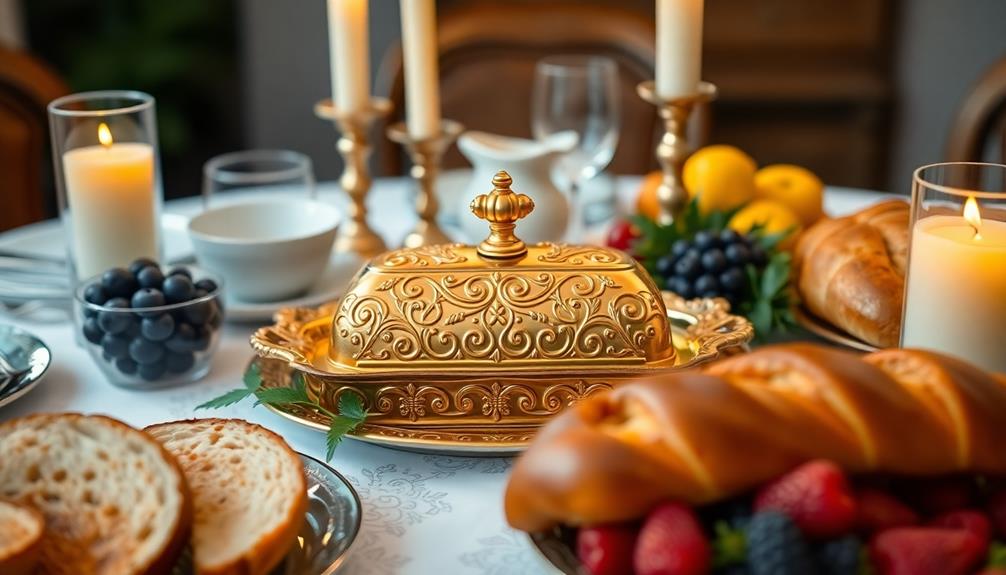
Butter plays a significant role in Jewish celebrations, especially during Shabbat meals where it complements the bread.
Throughout Hanukkah, you'll find dairy foods that often feature butter, symbolizing the miracle of the holiday.
Additionally, butter carries deeper meanings in various rituals, enhancing the spiritual experience of these gatherings.
Butter in Shabbat Meals
Shabbat meals hold a special significance in Jewish culture, and the role of butter can't be overlooked. It adds richness and flavor to the dishes that grace your table, enhancing the experience of this sacred time.
As you gather with family and friends, butter becomes a key player in creating a warm and inviting atmosphere.
Imagine the following staples on your Shabbat table:
- Challah with Butter: Freshly baked challah, its golden crust begging for a generous spread of creamy butter, transforming each bite into a delight.
- Potato Kugel: The crispy edges of potato kugel topped with melting butter, creating a savory and indulgent treat that's hard to resist.
- Vegetable Dishes: Roasted vegetables, glistening with a buttery glaze, bringing out their natural sweetness and making them a favorite among guests.
Hanukkah and Dairy Foods
During Hanukkah, many families embrace the tradition of incorporating dairy foods into their celebrations, often highlighting the delicious role of butter in these dishes.
You might find yourself enjoying classic recipes like latkes, which can be perfectly crisped in butter, adding a rich flavor that complements their texture. For dessert, buttery rugelach or rich cheesecake are popular choices that embody the festive spirit of the holiday.
As you gather with loved ones, the aroma of buttery treats fills the air, making the celebration even more special.
These dairy foods not only satisfy your taste buds but also connect you to the historical significance of Hanukkah. The use of dairy is often tied to the story of Judith, who used cheese to lure an enemy general before defeating him, symbolizing bravery and resourcefulness.
Symbolism in Rituals
How does butter find its way into the heart of Jewish celebrations? Butter plays a significant role in various Jewish rituals, symbolizing richness, joy, and the sweetness of life.
You'll often see it during special occasions, highlighting its importance in connecting the community to tradition and spirituality.
Consider these three vivid images that showcase butter's presence in Jewish celebrations:
- Challah: Soft, golden loaves, brushed with melted butter, served on festive tables during Shabbat and holidays, embodying warmth and abundance.
- Latkes: Crispy potato pancakes, fried to perfection in butter, their savory aroma filling homes during Hanukkah, drawing families together and sparking joy.
- Dairy Dishes: Creamy kugels, rich and decadent, often made with butter, served at special meals, reflecting the bounty of the land and the sweetness of family gatherings.
In each of these elements, butter acts as a bridge, enhancing flavors and creating cherished memories.
It's not just about taste; it's about the meaning behind these rituals, connecting generations and fostering a sense of belonging within the Jewish community.
Butter in Christian Practices
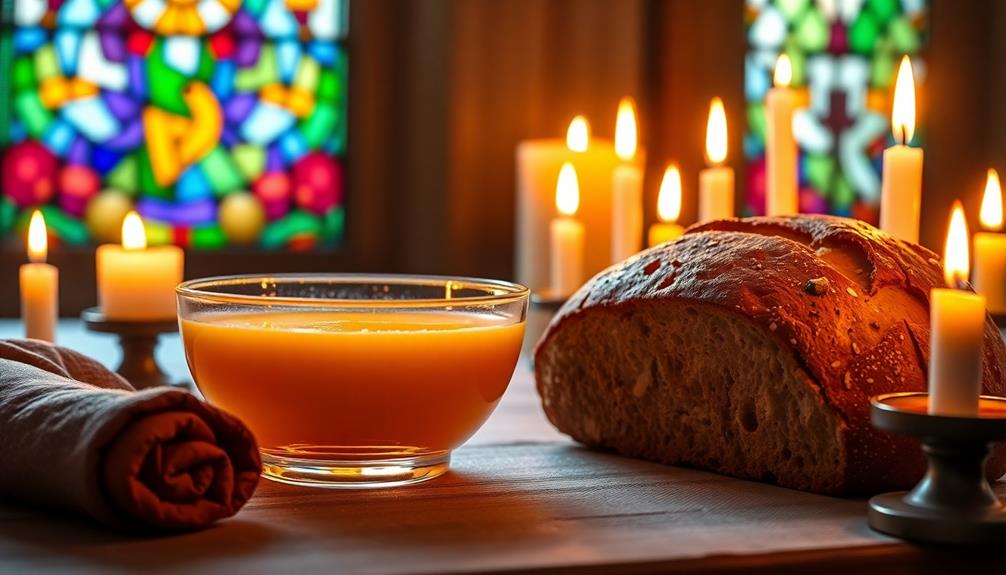
Incorporating butter into Christian practices often symbolizes abundance and hospitality. You'll find this ingredient used in various church gatherings and celebrations, particularly during feast days and communal meals. Butter's rich, creamy texture represents the blessings of God, reinforcing the idea of sharing and togetherness among congregants.
During special occasions like Easter or Christmas, churches may offer bread and butter to attendees as a sign of fellowship. This gesture not only nourishes the body but also fosters a spirit of community. When you partake in these meals, you experience the warmth and generosity that butter embodies.
In some regions, butter is also used in the preparation of traditional religious dishes, highlighting its importance in cultural expressions of faith. Whether it's in the making of festive pastries or comforting casseroles, butter enriches these culinary traditions, making them more meaningful.
Additionally, the act of breaking bread with butter reflects the biblical teachings of hospitality. By sharing meals that include butter, you're participating in a sacred ritual that honors the spirit of giving and receiving, reinforcing the bonds of love and faith within your community.
Symbolism of Butter in Buddhism
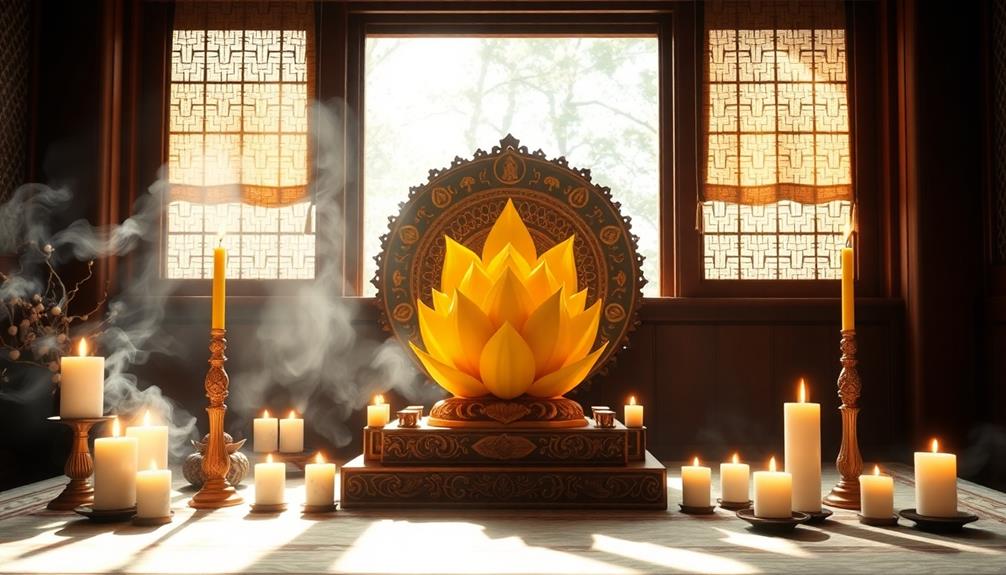
Butter holds significant symbolism in Buddhism, often representing purity and the essence of offering. When you think about butter in this situation, it reminds you of the qualities that practitioners endeavor to embody in their spiritual journeys.
It's not just a food substance; it embodies the richness of devotion and the warmth of compassion.
Consider these three vivid images that illustrate butter's symbolism in Buddhism:
- Butter Lamps: Lighting butter lamps during rituals creates a soft, flickering glow, symbolizing the illumination of wisdom and the dispelling of ignorance.
- Ghee Offerings: When you offer ghee (clarified butter) to deities, it represents the purity of your intentions and your desire to nourish both the spiritual and physical domains.
- Making Butter Sculptures: During festivals, you might witness intricate butter sculptures that serve as offerings, showcasing creativity and the transient beauty of life.
In these practices, butter becomes a powerful medium through which practitioners express their devotion, reminding you of the deeper meanings behind simple everyday substances.
Butter and African Traditions
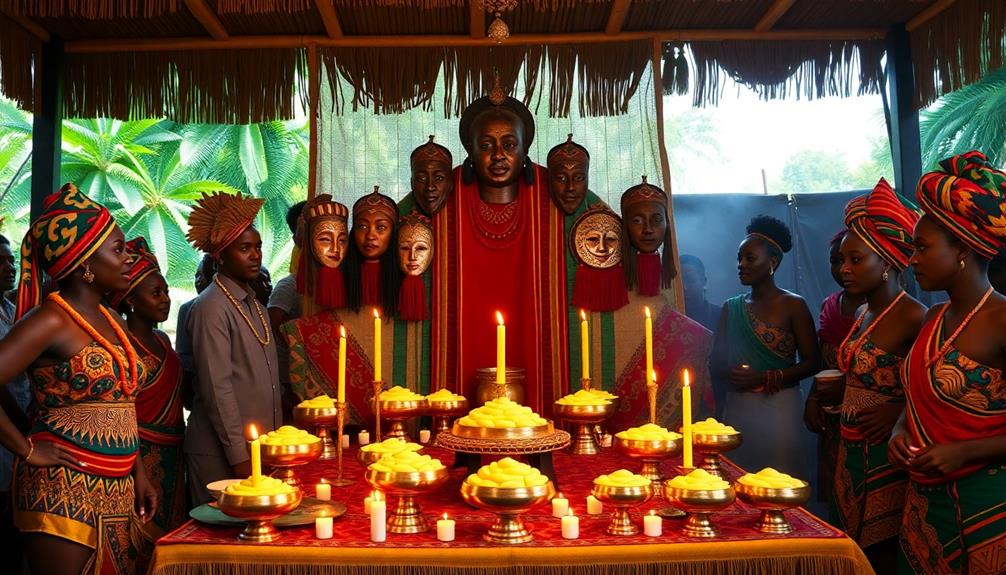
In many African traditions, butter serves not just as a culinary ingredient but as an essential component of cultural rituals and practices. You'll find that in various communities, butter is often used in ceremonies to honor ancestors, celebrate life events, and mark significant milestones.
For instance, during weddings, families may apply butter on the hands of the bride and groom as a symbol of prosperity and unity.
In spiritual practices, butter plays a role in offerings to deities or spirits, representing purity and nourishment. You might notice that some tribes use it in healing rituals, believing it carries protective qualities that ward off negative energies.
When offering butter to a shrine, you're not just providing food; you're sharing a piece of your essence, fostering a connection with the spiritual domain.
Additionally, butter can signify wealth and abundance, making it a sought-after item during festivals.
When you partake in these traditions, you're participating in a rich tapestry of cultural heritage that transcends generations. Butter, in these contexts, becomes more than a food item; it's a bridge between the physical and spiritual worlds, reflecting the values and beliefs of the community.
Butter in Native American Ceremonies
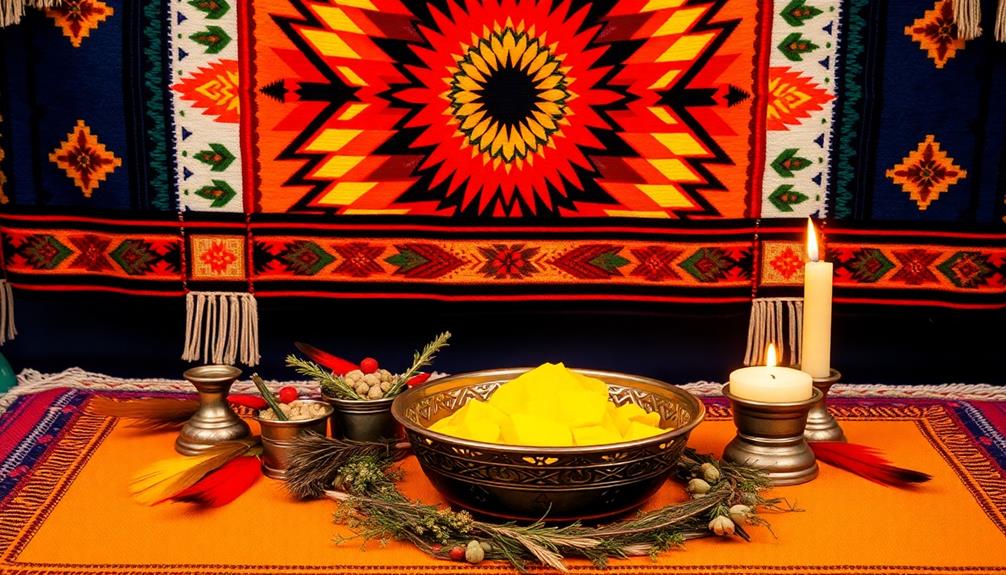
Many Native American ceremonies also recognize the significance of butter, particularly in the context of food offerings and communal gatherings. You'll find that butter, often made from locally sourced ingredients, symbolizes richness and the sharing of resources.
It's common to see butter used in various ceremonial dishes, enhancing flavors and nourishing the community.
During these gatherings, the presence of butter can often be felt through:
- Traditional Stews: Rich, hearty stews that incorporate butter to add depth and flavor, served during significant rituals.
- Cornbread: Soft, warm cornbread often slathered with butter, shared among participants as a symbol of unity and friendship.
- Offerings to Spirits: Butter may be included in offerings to honor ancestors or spirits, representing the bounty of the land.
In these ceremonies, butter serves not just as a food item but as a bridge connecting the past with the present. It strengthens bonds among community members and acknowledges the importance of sharing and giving thanks.
You'll see that in many ways, butter embodies the spirit of hospitality and reverence in Native American traditions.
Modern Interpretations of Butter Usage
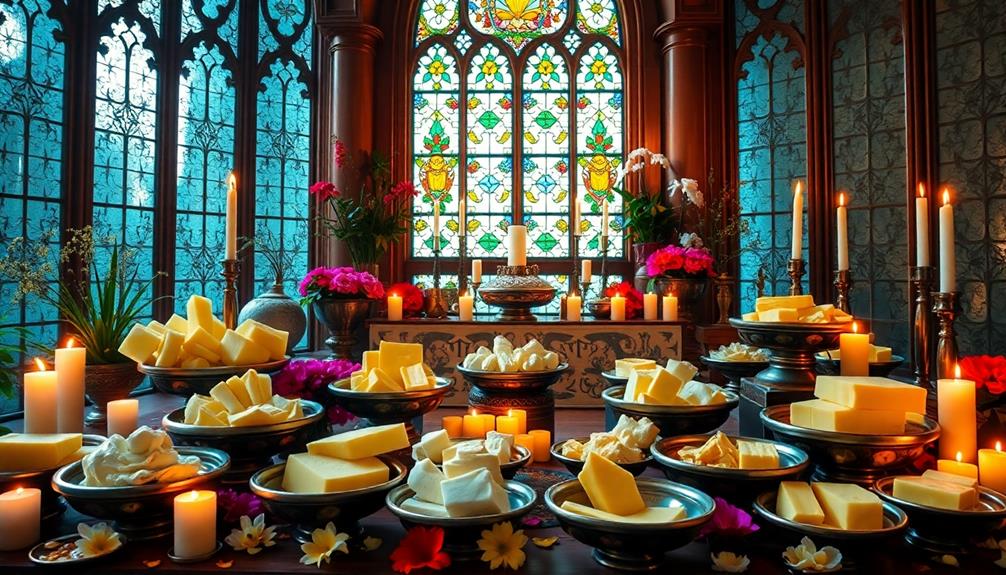
In today's world, butter still holds a unique cultural significance, often symbolizing purity and nourishment in various rituals.
You might notice its incorporation in modern worship practices, where it serves as a reminder of abundance and gratitude.
As you explore these traditions, you'll uncover the rich symbolism that butter continues to embody in spiritual contexts.
Cultural Significance Today
Butter holds a unique place in contemporary cultural practices, often symbolizing comfort and connection. It's more than just a cooking ingredient; it represents shared moments and traditions that bring people together. Whether you're celebrating a holiday or enjoying a casual meal, butter plays a role in creating a warm atmosphere.
Consider how butter enhances various experiences:
- Family Gatherings: Picture a cozy kitchen filled with laughter as you spread butter on freshly baked bread, sharing stories that bond generations.
- Culinary Traditions: Imagine the rich, creamy texture of butter in a traditional dish, connecting you to your cultural heritage and the recipes passed down through time.
- Comfort Foods: Visualize a plate of mashed potatoes, generously mixed with butter, evoking feelings of nostalgia and warmth after a long day.
In these ways, butter becomes a symbol of unity, nostalgia, and love. Its presence in our meals and rituals reflects a deeper cultural significance, reminding you of the connections you share with others and the memories you create together.
Today, butter continues to nourish both body and soul, making it an enduring element of cultural practices.
Rituals Incorporating Butter
Throughout various cultures, rituals incorporating butter have evolved to reflect modern interpretations of its significance. In many communities, you might find butter being used in celebrations and religious ceremonies, symbolizing nourishment and abundance.
For instance, during Hindu festivals, people often prepare special dishes with clarified butter, or ghee, to honor deities and share with family and friends, reinforcing community bonds.
In some Western traditions, you could participate in rituals that include butter as a gesture of hospitality. Offering bread with butter at gatherings symbolizes warmth and welcome.
Similarly, in contemporary spiritual practices, people might use butter in meditation or grounding rituals, appreciating its rich texture and comforting qualities.
You might also notice that some modern interpretations emphasize sustainability, with individuals opting for organic or locally sourced butter in their rituals. This choice reflects a growing awareness of environmental impact and a desire to connect more deeply with the earth.
Ultimately, these evolving practices showcase how butter remains a crucial element in rituals, bridging the gap between tradition and modernity while enriching your spiritual experience.
Symbolism in Worship
Many contemporary worship practices have embraced the symbolism of butter, seeing it as a representation of purity and divine nourishment. You might notice how this creamy substance is used to signify the richness of spiritual blessings.
When you engage in these rituals, the presence of butter can transform the atmosphere, inviting feelings of warmth and comfort.
Consider the following imagery associated with butter in worship:
- Golden Butter Melting – As it drips onto warm bread, it symbolizes the divine grace that seeps into your life, nourishing your soul.
- Butter Churned by Hand – This act reflects the labor of love and devotion, reminding you that spiritual growth often requires effort and patience.
- Butter on an Altar – Placed reverently, it serves as an offering, representing your heartfelt intentions and prayers, connecting you to the sacred.
In these modern interpretations, butter invites you to reflect on the deeper meanings of sustenance, purity, and the divine, enhancing your worship experience.
It's a reminder that the simplest elements can hold profound significance in your spiritual journey.
Frequently Asked Questions
Is Butter Considered Vegan in Any Religious Context?
You might find that butter isn't considered vegan in most contexts since it's derived from animals. However, some religious interpretations might have unique views, so it's worth exploring specific beliefs for differing perspectives.
How Do Different Cultures Differentiate Between Butter and Ghee?
In India, about 60% of households prefer ghee over butter for cooking. You'll find cultures differentiate by texture, flavor, and production methods, with ghee being clarified butter, offering a richer taste and higher smoke point.
Can Butter Be Substituted in Religious Rituals?
You can substitute butter in many religious rituals, but it's crucial to understand the significance of the original ingredient. Check with your community's traditions to guarantee your choice aligns with their beliefs and practices.
Are There Any Health Restrictions Regarding Butter in Religious Practices?
You might think butter's the devil's food, causing health chaos! But in religious practices, it's essential to check dietary restrictions—some folks avoid dairy for health reasons, while others embrace it as a divine gift.
What Are the Environmental Impacts of Butter Production in Religious Contexts?
Butter production contributes to greenhouse gas emissions, deforestation, and water usage. You might consider how these environmental impacts affect sustainability. Choosing alternatives or reducing consumption can help lessen your ecological footprint while respecting traditions.
Conclusion
In exploring butter's rich tapestry across various religions, you see it's more than just a cooking ingredient—it's a symbol of nourishment and devotion. From Hindu rituals to Native American ceremonies, butter binds communities and traditions together like a warm embrace. As you reflect on these practices, consider how something as simple as butter can carry profound meanings, reminding us that in every dollop lies a story waiting to be savored.
